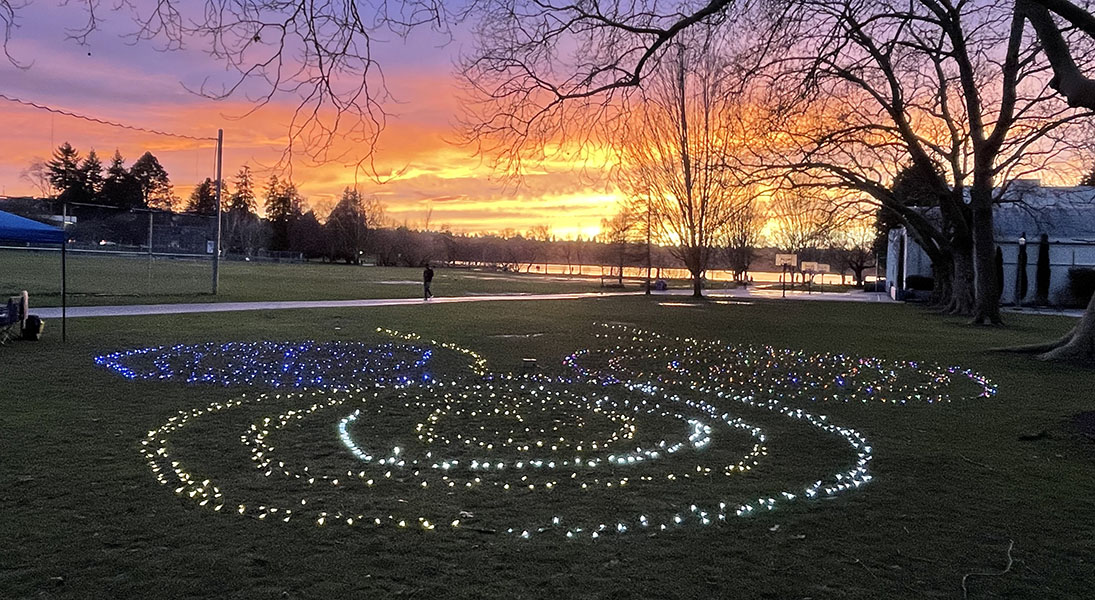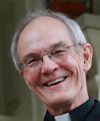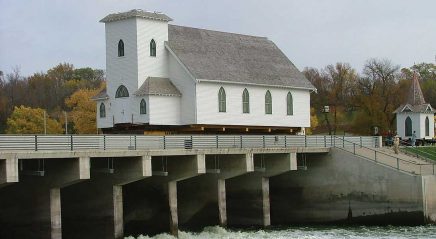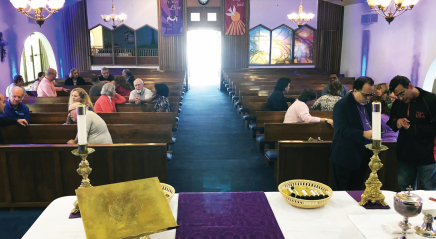We recognize the wisdom of Ecclesiastes when it comes to the life cycles of all living beings. As individuals, we know our lives will end someday. But it’s often more difficult to accept the reality that all human organizations, including our congregations, have life spans as well.
A 2021 study by the Center for Analytics, Research & Development and Data, affiliated with the United Church of Christ, found that, during the previous decade, between 3,850 and 7,700 U.S. congregations closed each year, or 75 to 150 per week. Some who study church trends believe the pace will quicken in the wake of the pandemic.
Closure of a ministry inevitably brings sadness and often a sense of failure or a measure of anger or guilt. One often hears: “If only we could attract a few more members, we’d keep going.” “If we had a young, dynamic pastor this wouldn’t be happening.” “I’m devastated to lose this church where I was married, where my kids were baptized and where I imagined my funeral taking place.”
Congregational decline and demise occur for many reasons. In rural communities that are depopulating, churches can lose members to the point where those remaining are unable to carry out the tasks required for vital congregational life. Buildings may deteriorate for lack of attention and maintenance funds. Offerings dwindle to the point where funds aren’t available for even a part-time pastor or one shared with another congregation or two.
In other geographic areas where the overall population may be stable or growing, a ministry may decline due to prolonged conflict that drives people away. Outright racism or subtler insensitivity keep some congregations from welcoming new neighbors who differ from the current members.
Today’s widespread decrease in commitment to religious communal life is another major contributor to decline. Many who do seek a church are drawn to well-funded congregations that can offer enticing programs.
How will we die?
For everything there is a season … a time to be born, and a time to die (Ecclesiastes 3:1-2).
“How will we die?” The question is as relevant for a congregation as for each of us as individuals. The conclusion of a ministry can sometimes leave a mess in its wake. Without a plan, a small remaining group of members may squander resources and even incur unpaid debt. Appropriate disposition of assets may not occur, leaving to others—often the synod—the tending of an unsalable property or deteriorating cemetery. The remaining members may be left without pastoral care rather than assisted in finding a new church home.
By contrast, the ending of a ministry can also be a congregation’s final gift and enduring legacy of faithful stewardship. If handled carefully, its death may spread seeds of new life elsewhere. Its assets may support other ministries. Some church buildings are sold and either demolished or converted into residential or commercial spaces, yet other properties continue serving vital needs in a community.
Across the ELCA, closing congregations’ assets are being used to support vibrant, ongoing ministries and new outreach initiatives.
First Lutheran in central Los Angeles was a vibrant congregation for more than a century, but by the late 20th century it had dwindled so badly that it had no future. Working with the Southwest California Synod, its remaining members committed a portion of assets from its valuable property to endow the First Lutheran Chair of Lutheran History and Theology at Pacific Lutheran Theological Seminary, Berkeley, Calif. This endowment ensures that seminarians will be well-grounded in our Lutheran tradition.
When the few remaining members of Emmanuel Lutheran in Baltimore knew they couldn’t go on, they wanted their legacy to undergird a dynamic, multicultural congregation in the city, Amazing Grace Lutheran. This diverse church serves its economically challenged neighborhood through a community garden, a prayer labyrinth, a food ministry, wellness initiatives, a children’s summer camp and many other ways.
Jill Schumann, treasurer of Amazing Grace, describes the financial resources provided from the sale of Emmanuel’s property as “catalytically transformative.” The legacy gift has also leveraged funds from foundations and other benefactors. Emmanuel’s gift has freed Amazing Grace to stop worrying so much about money and “focus on our mission of connecting people with the life-changing power of Jesus Christ,” she said.
Buildings transformed
Unless a grain of wheat falls into the earth and dies, it remains just a single grain; but if it dies it bears much fruit (John 12:24).
Across the ELCA, closing congregations’ assets are being used to support vibrant, ongoing ministries and new outreach initiatives.
In recent years the Nebraska Synod has creatively repurposed several congregations’ properties. The synod sold St. James Lutheran’s property in the small town of Edgar, Neb., to facilitate creation of a community center and coffee shop. In Omaha the former American Lutheran now houses Nile Lutheran Chapel, a thriving Sudanese community expected to become a new ELCA congregation.
A similar “mission restart” is afoot in Seattle, where Bethany Lutheran Church closed in 2016. Emmaus Table, an inclusive, intergenerational worshiping community grounded in Lutheran expression, has been developed by the Northwest Washington Synod. The community meets at Bethany’s former building, now called 7400 Woodlawn and repurposed to connect and engage with its Green Lake neighborhood.
A Tigrayan congregation uses the building, along with a preschool and the Emmaus partner Community Loaves, which provides home-baked bread to area food banks.
In Milwaukee, Capitol Drive Lutheran Church gave its building to the Table, which is described as “an innovative synod-authorized ministry.” The Table began offering worship services there this year. The building also houses a culinary school, a yoga studio and an art studio.
Similarly, after the merger of two congregations in Midland, Mich., the former building of St. Timothy Lutheran became a community literacy center.
When Grace Lutheran Church in Two Taverns, Pa., concluded its ministry, the funds were distributed to 10 agencies in the Lower Susquehanna Synod. Recipients were chosen carefully to carry forward Grace’s historic commitments to serve youth, a local fire company, Scouting and several agencies that assist food-insecure and unhoused people.
Deborah McClellan, a deacon and the last rostered minister to serve at Grace, assisted the congregation in selling the church building to a startup funeral home that promotes green burial practices.
After First Lutheran Church of Glendale, Calif., closed, its property became the Lutheran Center, where the Southwest California Synod office shares space with an Episcopal seminary and continuing education center. And in Houston, the Gulf Coast Synod keeps its offices in a former congregation’s building, out of which it hopes to start a worshiping community.
Many arms of the church remind us how important it is to have a will as we position our assets to serve family members and others after we die. Congregations must also contemplate a time when the doors must close and the lights are turned off one final time. Such planning might seem an act of faithlessness or throwing in the towel, but in truth it shows confidence in God’s power to bring new life out of death.










